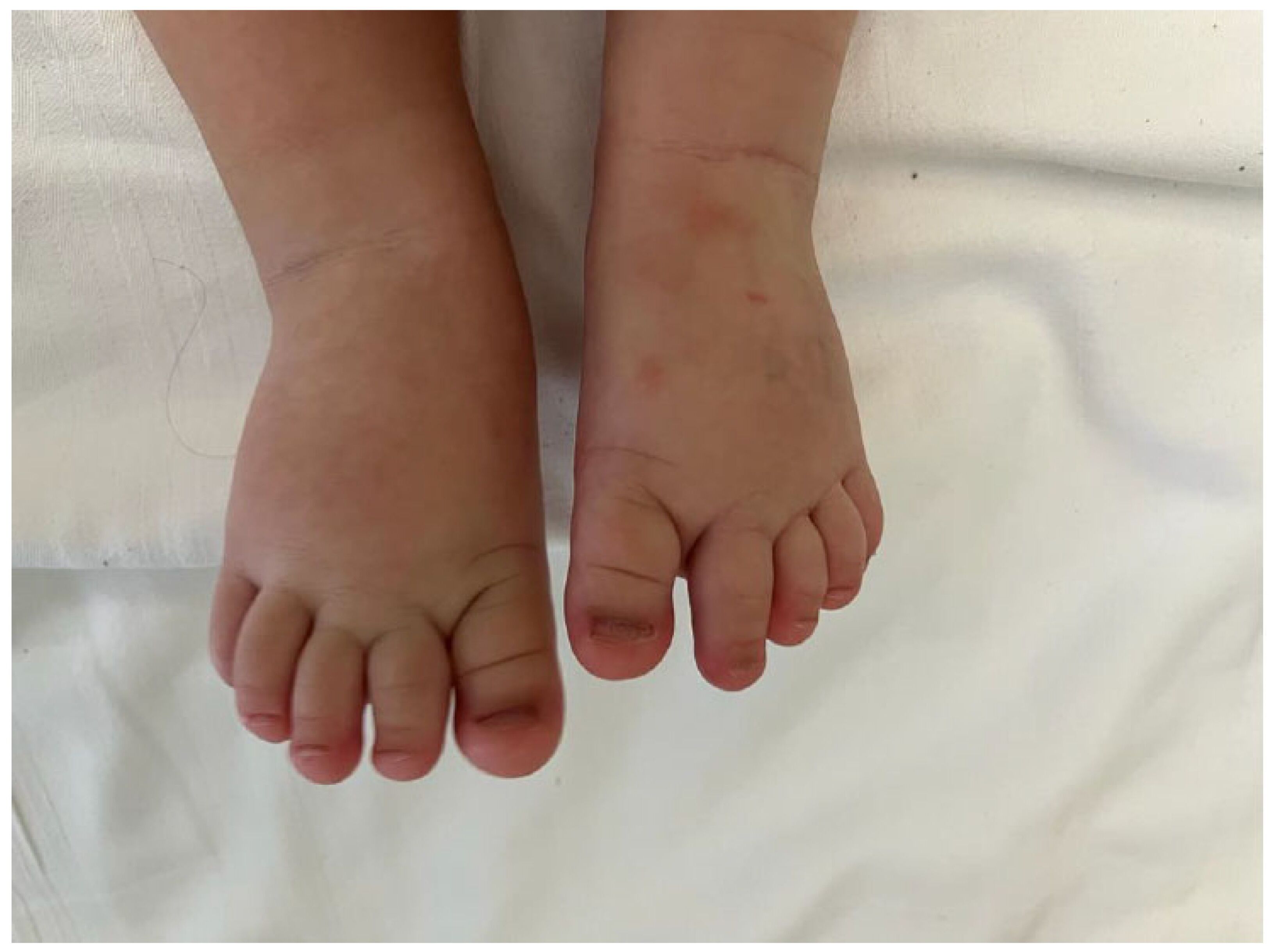
What exactly is Overgrowth Syndrome? Overgrowth syndromes are a group of genetic disorders where the body grows excessively. This can affect the whole body or just specific parts. Imagine growing taller or having larger limbs than usual. These conditions often come with other issues like unusual facial features, developmental delays, and a higher risk of tumors. Some well-known examples include Sotos syndrome and Beckwith-Wiedemann syndrome. Diagnosing these syndromes involves physical exams, genetic tests, and sometimes imaging studies. Early diagnosis is crucial for managing health risks and providing proper care. Understanding these syndromes helps families and doctors make informed decisions.
Key Takeaways:
- Overgrowth syndromes cause excessive growth and other health issues. They can be generalized or localized, affecting the whole body or specific parts. Genetic testing and early diagnosis are crucial for managing these conditions.
- Understanding the genetic causes and molecular pathways of overgrowth syndromes is important for diagnosis and management. Timely diagnosis is essential for genetic counseling and cancer surveillance.
What Are Overgrowth Syndromes?
Overgrowth syndromes are genetic disorders where excessive growth occurs, often with other health issues. These conditions can affect the entire body or just specific parts.
-
Definition of Overgrowth Syndromes: These disorders involve abnormal tissue growth, either generalized or localized. The term "overgrowth" lacks a formal definition but generally means an abnormal increase in size or weight.
-
Types of Overgrowth Syndromes: They can be broadly classified into generalized and segmental. Generalized affects the whole body, while segmental is localized.
Generalized Overgrowth Syndromes
Generalized overgrowth syndromes involve symmetrical growth affecting multiple body systems. Here are some well-known examples.
-
Sotos Syndrome: Characterized by macrocephaly, tall stature, and intellectual disability. It's caused by mutations in the NSD1 gene.
-
Beckwith-Wiedemann Syndrome (BWS): Associated with macrosomia, macroglossia, and an increased risk of embryonal tumors. Mutations in the CDKN1C gene or other genes in the 11p15 region are responsible.
-
Simpson-Golabi-Behmel Syndrome: Features include macrosomia, macroglossia, and a higher risk of neoplasia. It's caused by mutations in the GPC3 gene.
Segmental Overgrowth Syndromes
Segmental overgrowth syndromes are asymmetrical and affect specific body parts. Here are some examples.
-
Proteus Syndrome: Characterized by lipomas, cerebriform cutaneous nevi, and vascular anomalies. It involves mutations in the AKT1 gene.
-
Klippel-Trenaunay-Weber Syndrome: Features hemangiomas and limb hypertrophy. It's linked to mutations in the PIK3CA gene.
-
Neurofibromatosis Type I: Presents with café-au-lait spots, neurofibromas, and skeletal abnormalities. It's caused by mutations in the NF1 gene.
Clinical Features of Overgrowth Syndromes
These syndromes often come with a mix of clinical features, making diagnosis complex.
-
Macrosomia: Excessive birth weight is a common feature.
-
Macrocephaly: Enlarged head circumference often accompanies these conditions.
-
Dysmorphic Features: Facial abnormalities are frequently observed.
-
Congenital Anomalies: Birth defects are common in these syndromes.
-
Neurological Problems: Issues like seizures, developmental delays, and intellectual disability are often present.
Genetic Causes and Molecular Pathways
Understanding the genetic basis and molecular pathways involved helps in diagnosing and managing these syndromes.
-
Genetic Causes: Many overgrowth syndromes have a genetic basis, with specific gene mutations responsible for each condition.
-
Molecular Pathways: Dysregulation of pathways like PI3K/AKT and RTK is common in these syndromes.
Diagnostic Methods for Overgrowth Syndromes
Diagnosing these syndromes involves a combination of clinical evaluation, genetic testing, and imaging studies.
-
Physical Examination: Identifying dysmorphic features and congenital anomalies is crucial.
-
Anthropometric Measurements: Assessing height, weight, and head circumference helps in diagnosis.
-
Imaging Studies: MRI and other imaging techniques evaluate brain structure and bone age.
-
Genetic Testing: Identifying mutations in specific genes confirms the diagnosis.
Importance of Early Diagnosis
Early diagnosis is vital for several reasons, including genetic counseling and cancer surveillance.
-
Genetic Counseling: Helps families understand the condition and its implications.
-
Cancer Surveillance: Many overgrowth syndromes have an increased risk of neoplasia, necessitating regular monitoring.
Differential Diagnoses
Differential diagnoses include conditions that mimic overgrowth but lack a genetic basis.
-
Familial Overgrowth: Caused by familial factors rather than genetic mutations.
-
Growth Acceleration: Driven by over-nutrition or endocrine conditions like precocious puberty or hyperthyroidism.
Overlapping Clinical Features
Many overgrowth syndromes share clinical features, complicating diagnosis.
- Sotos Syndrome and BWS: Both can present with macrosomia and macrocephaly but have distinct genetic causes.
Role of Radiological Methods
Radiological methods are crucial, especially in segmental overgrowth syndromes.
-
Proteus Syndrome: Characterized by lipomas, cerebriform cutaneous nevi, and vascular anomalies.
-
Klippel-Trenaunay-Weber Syndrome: Characterized by hemangiomas and limb hypertrophy.
Importance of Molecular Classification
Recent advances focus on molecular classification to identify novel genes and potential therapies.
- Molecular Classification: Helps in identifying new genes involved in growth anomalies and potential treatments.
Unclassified Overgrowth Syndromes
Despite advances, many patients remain unclassified, highlighting the need for further research.
- Genetic Heterogeneity: Unclassified cases show the genetic diversity of these disorders.
Clinical Relevance of Overgrowth Syndromes
These syndromes have significant clinical relevance, often presenting with health concerns and tumor risks.
-
Health Concerns: Inherent health issues necessitate prompt diagnosis and referral.
-
Tumor Predisposition: Increased risk of neoplasia requires regular monitoring.
Common Overgrowth Syndromes
Some overgrowth syndromes are more common than others.
-
Sotos Syndrome: Characterized by macrocephaly, tall stature, and intellectual disability.
-
Beckwith-Wiedemann Syndrome: Associated with macrosomia, macroglossia, and an increased risk of embryonal tumors.
-
Simpson-Golabi-Behmel Syndrome: Characterized by macrosomia, macroglossia, and an increased risk of neoplasia.
Rare Overgrowth Syndromes
Some overgrowth syndromes are rare and less well-known.
- Moreno-Nishimura-Schmidt Overgrowth Syndrome: Characterized by severe pre- and postnatal overgrowth, dysmorphic facial features, and skeletal abnormalities.
Epigenetic Factors in Overgrowth Syndromes
Epigenetic factors also play a role in these conditions.
- Beckwith-Wiedemann Syndrome: Maternal hypomethylation of the KvDMR1 region is associated with this syndrome.
Management Strategies for Overgrowth Syndromes
Managing these syndromes involves addressing the genetic cause and associated health concerns.
-
Genetic Counseling: Informing families about the condition and its implications.
-
Cancer Surveillance: Regular monitoring for neoplastic changes.
-
Medical Complications: Managing conditions like hypoglycemia, seizures, and developmental delays.
Importance of Timely Diagnosis
Timely diagnosis is crucial for several reasons.
-
Genetic Counseling: Accurate counseling helps families understand the condition.
-
Cancer Surveillance: Increased risk of neoplasia necessitates regular monitoring.
Key Takeaways on Overgrowth Syndrome
Overgrowth syndromes are complex genetic disorders marked by excessive growth and various health issues. They can be generalized or segmental, affecting either the entire body or specific areas. Common syndromes include Sotos, Beckwith-Wiedemann, and Proteus. These conditions often involve genetic mutations in pathways like PI3K/AKT and RTK. Early diagnosis is crucial for effective management, including genetic counseling and cancer surveillance. Clinical features range from macrosomia and macrocephaly to developmental delays and congenital anomalies. Diagnostic methods include physical exams, imaging studies, and genetic testing. Management focuses on addressing genetic causes and associated health concerns. Future research aims to uncover new genes and therapeutic interventions. Understanding these syndromes helps improve the quality of life for affected individuals.
Frequently Asked Questions
Was this page helpful?
Our commitment to delivering trustworthy and engaging content is at the heart of what we do. Each fact on our site is contributed by real users like you, bringing a wealth of diverse insights and information. To ensure the highest standards of accuracy and reliability, our dedicated editors meticulously review each submission. This process guarantees that the facts we share are not only fascinating but also credible. Trust in our commitment to quality and authenticity as you explore and learn with us.


